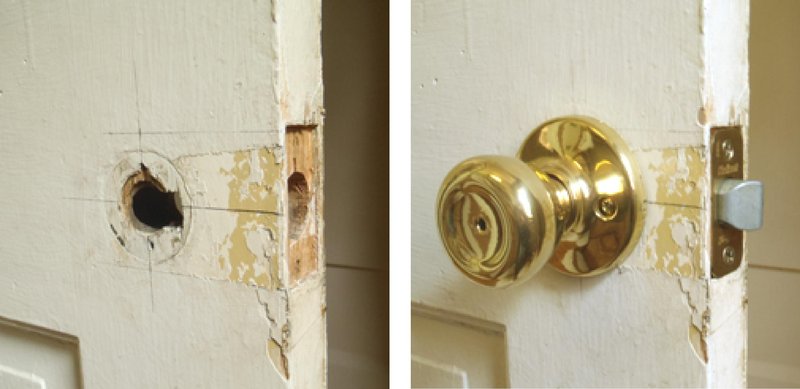
Don’t worry! Repairing a damaged cam isn’t as daunting as it sounds. With some basic tools and a bit of know-how, you can get your door knob back in shape. In this guide, I’ll walk you through the process step-by-step, so you can tackle this repair confidently.
What is a Cam in a Door Knob?
To understand the repair process, it’s essential to know what the cam actually is. The cam is a small, rotating piece that interacts with the latch inside the door. When you turn the knob, the cam moves, pushing the latch out of the strike plate, allowing the door to open or close. If the cam gets damaged, it might not engage properly, leading to a door knob that feels stiff or doesn’t function at all.
You might be wondering what causes the cam to get damaged in the first place. Common issues include wear and tear from frequent use, improper installation, or even exposure to moisture. Over time, these factors can lead to a cam that’s cracked, bent, or even entirely broken.
Knowing this, you can gauge whether you need a simple repair or a full replacement of the knob. If you notice only minor issues with the cam, a repair might be all it takes to restore your door’s functionality.
Tools You’ll Need for the Repair
Before diving into the repair, it’s time to gather the necessary tools. Having everything ready will make the process smoother and quicker. Here’s a list of what you’ll need:
- Screwdriver (usually flathead or Phillips, depending on your door knob)
- Replacement cam (if the current one is damaged beyond repair)
- Lubricant (like WD-40 or silicone spray)
- Towel (for any excess lubricant)
- Flashlight (to see inside the knob mechanism clearly)
If you have these tools at hand, you’re all set to start the repair. Honestly, the worst that can happen is you’ll take a little longer if you find you don’t have what you need!
Removing the Door Knob
Let’s get to the fun part—removing the door knob. This process can feel a bit intimidating, but it’s straightforward once you break it down. Here’s how to do it:
1. Locate the Screws: Start by examining your door knob for screws. They are usually visible on the side or underside of the knob.
2. Unscrew the Knob: Use your screwdriver to carefully remove these screws. Make sure to keep them in a safe place so they don’t get lost.
3. Separate the Knob Halves: Gently pull the two halves of the knob apart. If they’re stuck, a little wiggle can help. You want to expose the inner workings of the knob.
4. Inspect the Cam: Once the knob is apart, take a look at the cam. If it’s broken or too damaged, you’ll need to replace it. If it looks bent or dirty, you can usually fix it with some simple adjustments.
Repairing or Replacing the Cam
Now that you have the knob apart, it’s time to address the cam. Depending on its condition, you have two options: repair or replace.
If Repairing:
– Bend it Back: If the cam is bent, you can gently try to bend it back into shape. Do this slowly to avoid breaking it entirely.
– Clean It: Dust and grime can cause the cam to function poorly. Use a cloth to wipe it down, removing any debris.
If Replacing:
1. Remove the Old Cam: If the cam is broken, it’s time to replace it. Take out the damaged cam by unscrewing it or pulling it out, depending on your knob design.
2. Install the New Cam: Align the new cam in the same position as the old one and secure it according to the manufacturer’s instructions.
Choosing between repair and replacement depends on the cam’s state. If it still has some life left, a quick fix can save you time and money. If not, investing in a new cam is often the best route.
Reassembling the Door Knob
Once the cam is repaired or replaced, it’s time to put everything back together. Here’s how:
1. Reconnect the Knob Halves: Align the two halves of the knob together, ensuring that everything fits snugly.
2. Screw It Back Together: Use your screwdriver to reinsert the screws you removed earlier. Tighten them enough to hold the knob securely, but don’t overtighten as this can cause the knob to bind.
3. Check the Functionality: Before putting everything back, give the knob a test spin. It should turn smoothly and engage the latch easily. If it doesn’t feel right, double-check your alignment.
Lubricating the Mechanism
After reassembly, it’s a good practice to lubricate the mechanism. This helps with smooth operation and can extend the life of your door knob. Here’s how to do it:
1. Choose Your Lubricant: WD-40 or a silicone-based lubricant works well. Avoid using oil, as it can attract dirt and grime over time.
2. Apply Sparingly: Spray a small amount into the mechanism through any accessible openings. A little goes a long way!
3. Wipe Away Excess: Use your towel to clean up any drips or excess lubricant. You don’t want it to get on your door or floor.
Regular maintenance like this can keep your door knob functioning properly for years to come.
Repairing a damaged cam on an interior door knob isn’t rocket science, but it does require some basic understanding and a bit of patience. With the right tools and steps, you can turn a frustrating situation into a simple DIY project. Just remember to assess the condition of the cam first, then decide whether to repair or replace.
Taking care of this small part of your home can lead to a smoother, more functional living space. So, when your door knob starts to act up, you’ll know exactly what to do. Happy repairing!